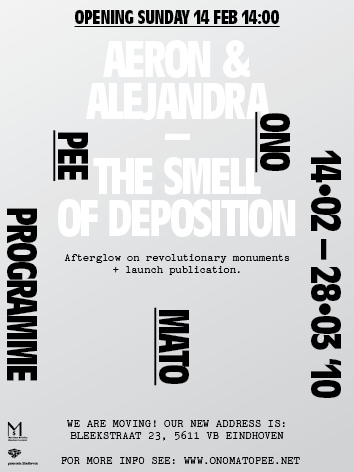Onomatopee 40 - CABINET #1: The Smell of Deposition
Afterglow on revolutionary monuments
Aeron Bergman and Alejandra Salinas
What does time do to place when it comes to our present day idealistic projections onto these? What does time do to place when it comes to the implementation of our hopes and fears onto specific sites where the historic materialisation of similar hopes and fears are presented to us as monuments of revolutions?
If history truly repeats itself or if we indeed cannot resist the homo economicus within us, then why would we be tempted to long for another revolution or even to cause another one? Why are we tempted by the romance of past revolutions? Why do salon revolutionaries in the 'developed world' experience the visual remains of revolutions in other continents different from the revolutionaries on site? Are we allowed to sincerely crave for revolution’s idealistic promises or do we, looking back upon history, admit that revolution's resulting policy is corrupt?
Aeron Bergman (US) and Alejandra Salinas (ES) made gouache drawings of multiple monuments of revolutions worldwide. Each drawing represents not only the specific raison d’être of each monument but also, extra more, a variety of styles, commissioners, craft, eras and political outcomes. The series enables an additional suggestion of 'revolution' as regards its romantic pronunciation, craft-wise created, through secondary source material of monuments and is, as such, an artistic quest into the roaming qualities of those primary aspects - people, place, time - that brought the work about in the first place.
What does a proceeding time do to the static thing, when it comes down to our present day idealistic projections onto these? What does time do when it comes down to the implementation of our hopes and fears onto specific sites, where the historic materialisation of similar hopes and fears are presented to us as monuments of revolutions?
